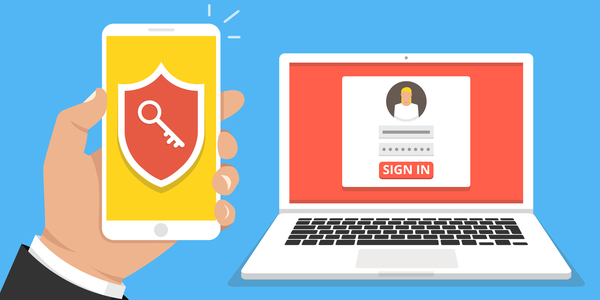Turn on MFA Before Crooks Do It For You
June 19 2020Hundreds of popular websites now offer some form of multi-factor authentication (MFA), which can help users safeguard access to accounts when their password is breached or stolen. But people who don’t take advantage of these added safeguards may find it far more difficult to regain access when their account gets hacked, because increasingly thieves will enable multi-factor options and tie the account to a device they control. Here’s the story of one such incident.

As a career chief privacy officer for different organizations, Dennis Dayman has tried to instill in his twin boys the importance of securing their online identities against account takeovers. Both are avid gamers on Microsoft’s Xbox platform, and for years their father managed their accounts via his own Microsoft account. But when the boys turned 18, they converted their child accounts to adult, effectively taking themselves out from under their dad’s control.
On a recent morning, one of Dayman’s sons found he could no longer access his Xbox account. The younger Dayman admitted to his dad that he’d reused his Xbox profile password elsewhere, and that he hadn’t enabled multi-factor authentication for the account.
When the two of them sat down to reset his password, the screen displayed a notice saying there was a new Gmail address tied to his Xbox account. When they went to turn on multi-factor authentication for his son’s Xbox profile — which was tied to a non-Microsoft email address — the Xbox service said it would send a notification of the change to unauthorized Gmail account in his profile.
Wary of alerting the hackers that they were wise to their intrusion, Dennis tried contacting Microsoft Xbox support, but found he couldn’t open a support ticket from a non-Microsoft account. Using his other son’s Outlook account, he filed a ticket about the incident with Microsoft.
Dennis soon learned the unauthorized Gmail address added to his son’s hacked Xbox account also had enabled MFA. Meaning, his son would be unable to reset the account’s password without approval from the person in control of the Gmail account.
Luckily for Dayman’s son, he hadn’t re-used the same password for the email address tied to his Xbox profile. Nevertheless, the thieves began abusing their access to purchase games on Xbox and third-party sites.
“During this period, we started realizing that his bank account was being drawn down through purchases of games from Xbox and [Electronic Arts],” Dayman the elder recalled. “I pulled the recovery codes for his Xbox account out of the safe, but because the hacker came in and turned on multi-factor, those codes were useless to us.”
Microsoft support sent Dayman and his son a list of 20 questions to answer about their account, such as the serial number on the Xbox console originally tied to the account when it was created. But despite answering all of those questions successfully, Microsoft refused to let them reset the password, Dayman said.
“They said their policy was not to turn over accounts to someone who couldn’t provide the second factor,” he said.
Dayman’s case was eventually escalated to Tier 3 Support at Microsoft, which was able to walk him through creating a new Microsoft account, enabling MFA on it, and then migrating his son’s Xbox profile over to the new account.
Microsoft told KrebsOnSecurity that while users currently are not prompted to enable two-step verification upon sign-up, they always have the option to enable the feature.
“Users are also prompted shortly after account creation to add additional security information if they have not yet done so, which enables the customer to receive security alerts and security promotions when they login to their account,” the company said in a written statement. “When we notice an unusual sign-in attempt from a new location or device, we help protect the account by challenging the login and send the user a notification. If a customer’s account is ever compromised, we will take the necessary steps to help them recover the account.”
Certainly, not enabling MFA when it is offered is far more of a risk for people in the habit of reusing or recycling passwords across multiple sites. But any service to which you entrust sensitive information can get hacked, and enabling multi-factor authentication is a good hedge against having leaked or stolen credentials used to plunder your account.
What’s more, a great many online sites and services that do support multi-factor authentication are completely automated and extremely difficult to reach for help when account takeovers occur. This is doubly so if the attackers also can modify and/or remove the original email address associated with the account.
KrebsOnSecurity has long steered readers to the site twofactorauth.org, which details the various MFA options offered by popular websites. Currently, twofactorauth.org lists nearly 900 sites that have some form of MFA available. These range from authentication options like one-time codes sent via email, phone calls, SMS or mobile app, to more robust, true “2-factor authentication” or 2FA options (something you have and something you know), such as security keys or push-based 2FA such as Duo Security (an advertiser on this site and a service I have used for years).
Email, SMS and app-based one-time codes are considered less robust from a security perspective because they can be undermined by a variety of well-established attack scenarios, from SIM-swapping to mobile-based malware. So it makes sense to secure your accounts with the strongest form of MFA available. But please bear in mind that if the only added authentication options offered by a site you frequent are SMS and/or phone calls, this is still better than simply relying on a password to secure your account.




